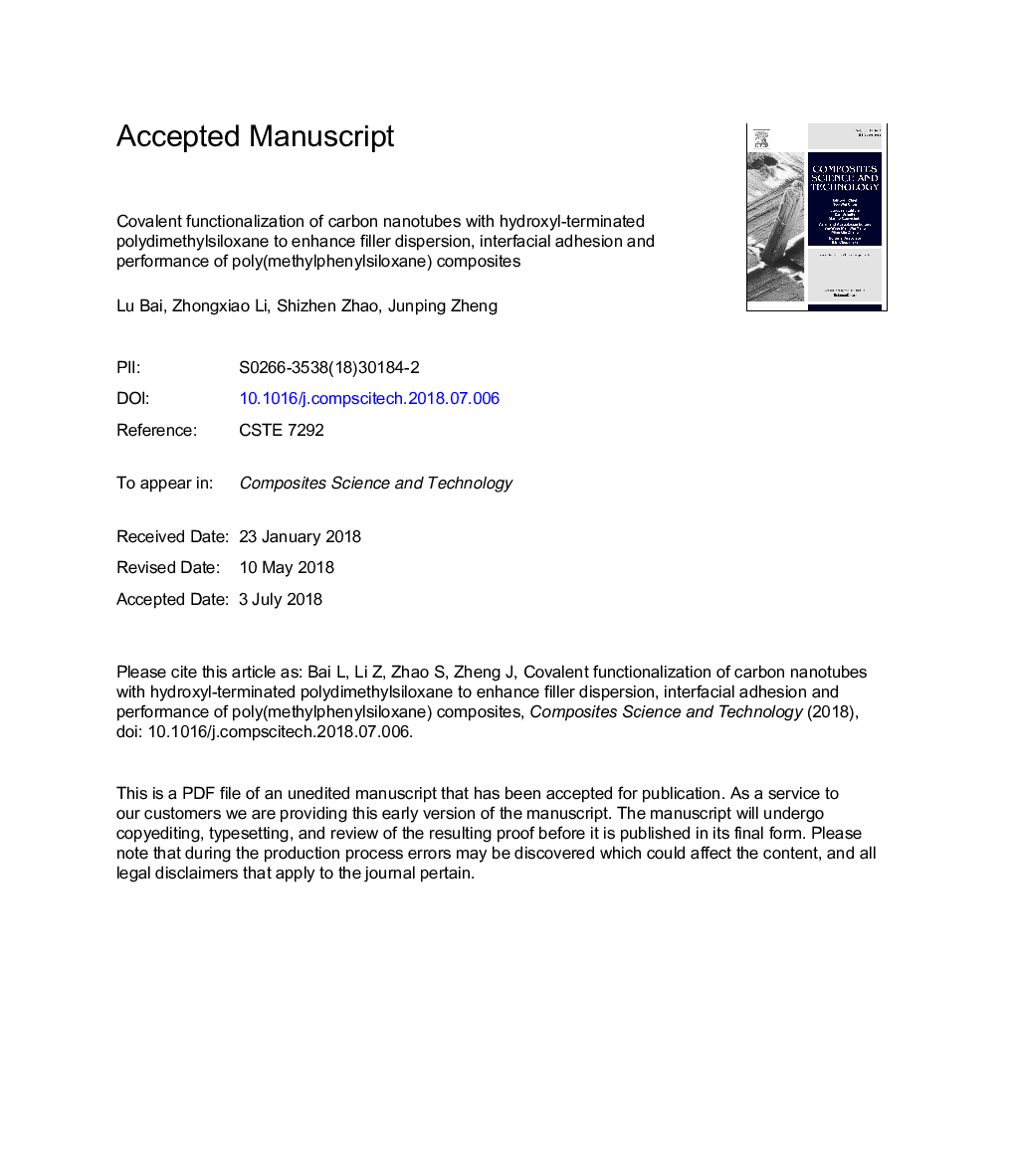| Article ID | Journal | Published Year | Pages | File Type |
|---|---|---|---|---|
| 7214125 | Composites Science and Technology | 2018 | 24 Pages |
Abstract
Surface modification of carbon nanotubes (CNTs) were performed by grafting of hydroxyl-terminated polydimethylsiloxane (HPDMS) covalently. The results of dissolution experiments revealed that long-time stable dispersions of HPDMS-functionalized CNTs (CNTs-HPDMS) were achieved in a range of solvents including ethanol, ethyl acetate, dimethylbenzene and cyclohexane, even after being placed for 3 months. Subsequently, CNTs-HPDMS were incorporated into poly(methylphenylsiloxane) (PMPS) matrix to prepare composites. Scanning electron microscopy analysis showed that CNTs-HPDMS had homogeneous dispersion and strong interfacial adhesion in PMPS, which led to much better mechanical properties of composites compared to those filled with untreated CNTs. Furthermore, the incorporation of CNTs-HPDMS significantly enhanced the thermal stability of PMPS composites both under nitrogen and air. The improved barrier effect of CNTs-HPDMS resulted from the better filler dispersion was considered to play a crucial role, which on the one hand suppressed the depolymerization of PMPS under nitrogen and on the other hand inhibited the oxygen diffusion in matrix under air. Besides, the hydroxyl groups of HPDMS could react with PMPS to form additional crosslinking during heating, and thus delayed the degradation of PMPS to some extent.
Keywords
Related Topics
Physical Sciences and Engineering
Engineering
Engineering (General)
Authors
Lu Bai, Zhongxiao Li, Shizhen Zhao, Junping Zheng,
